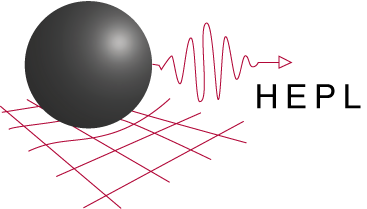News & Events
HEPL-KIPAC Experimental Seminars
Wednesday, April 14, 2010
Saidur Rahaman
Los Alamos National Laboratory,
Los Alamos, NM
Applications of ion traps to high precision experiments
Abstract: Ion trapping and laser cooling are established techniques for conducting the high precision spectroscopy experiments in Physics. RF Paul traps have been widely used for decades for frequency standards, quantum information, and various atomic physics applications. Similarly, magnetic Penning traps have been used for nuclear-astrophysics, standard model tests, anti-hydrogen, and trace element analysis experiments.
First, I will discuss the ion trap experiment JYFLTRAP, which consists mainly of three different parts: a gas cell for slowing radioactive ions produced in a cyclotron ; a radiofrequency quadrupole structure for cooling, accumulating and bunching the ions; and a double Penning trap system for isobaric purification and cyclotron frequency measurements. This experiment contributed to the understanding of many physics problems. Among these, I will highlight the importance of the precise Q-value measurements of Double-Beta Decay candidates. Secondly, I will talk about to a precise atomic spectroscopy experiment at LANL for probing the time variation of the fine structure constant Alpha (α) by trapping and cooling ytterbium ions in an RF trap. The current status of trapping a single ion and clock transition measurements will be presented.
Bio: PhD from University of Heidelberg, Heidelberg, Germany, 2005: Building and commissioning an ion trap facility for measuring the masses of transuranium elements.
Post Doct, Jyvaskyla University, Jyvaskyla, Finland, 2005-2008: Measuring masses and Q-values of radioactive nuclei for nuclear astrophysics, and, weak interaction study.
Research Associate, Los Alamos national Lab, Los Alamos, NM. USA, 2008-2010: Conducting an experiment for probing the time variation of the Fine Structure Constant Alpha (α) by trapping a laser cooled Ytterbium ion in a linear RF trap.
Time: 4:00pm – 5:30pm
Location: Physics and Astrophysics Conference Room 102/103
Light refreshments available 4:00pm; Presentation begins 4:15pm.
Open to All


